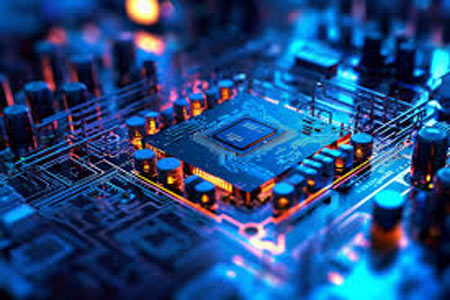- +91-8624883983
- info@insightsmicro.com
Embeded : Trending Facts & Insights

Embedded refers to the embedded systems market, which includes specialty computing systems designed to perform predetermined functions in various machines or systems. Numerous industries such as the automotive industry, healthcare, telecommunications, consumer electronics, and industrial automation utilize these systems.
Experts estimate that the embedded systems market will reach over $180 billion by 2030. Some of the leading factors that contribute to such growth are:
There has been a rise in the adoption of IoT devices across various industries.
The demand from the consumer electronics segment continues to grow.
This study has added traction to how embedded technologies are penetrating the automotive safety and autonomous driving sectors.
In industrial and robotic automation, the use of embedded systems has been evolving.
In this market, a large market share is held by North America, with Europe and Asia-Pacific accounting for the bulk of remaining markets with sustained growth in all the emerging economies.
Global Embeded Industry
Overview
Embedded refers to the embedded systems market, which includes specialty computing systems designed to perform predetermined functions in various machines or systems. Numerous industries such as the automotive industry, healthcare, telecommunications, consumer electronics, and industrial automation utilize these systems.
Experts estimate that the embedded systems market will reach over $180 billion by 2030. Some of the leading factors that contribute to such growth are:
There has been a rise in the adoption of IoT devices across various industries.
The demand from the consumer electronics segment continues to grow.
This study has added traction to how embedded technologies are penetrating the automotive safety and autonomous driving sectors.
In industrial and robotic automation, the use of embedded systems has been evolving.
In this market, a large market share is held by North America, with Europe and Asia-Pacific accounting for the bulk of remaining markets with sustained growth in all the emerging economies.

Types & Definition
The embedded industry is dedicated to the design, manufacture, and implementation of embedded systems-integrated computing machines that form part of a larger system or device. These systems should include hardware and software, which are specifically constructed for efficient performance under particular tasks with some level of stability.
1. Standalone Embedded Systems: Work independently of other systems, such as digital cameras, for example.
2. Real-Time Embedded Systems: These are intended to perform time-critical tasks, like anti-lock braking systems (ABS).
3. Networked Embedded Systems: Communicate with external systems, for instance, smart thermostats.
4. Mobile Embedded Systems: Found in all sorts of portable devices, from smartphones to fitness wearables.
5. IoT Embedded Systems: Serve for efficacy-boosting rapid connectivity and data exchange, like smart home appliances.
Industry Trends
1. The Artifical Inteligence and machine learning integration trend has gained significant traction. This can make smart decisions and assist in automation.
2. RISC-V and Open-Source Development. The forward move toward this will be important for driving innovation and controlling project costs simultaneously.
3. Expansion of IoT. Embedded systems are the core of the growing internet-of-things ecosystem that powers smart cities, homes, offices, and industries.
4. Energy-Efficient Embedded Systems. In the endeavor to ensure the long life of battery-powered or autonomous devices, energy-efficient requirements are massive.
Facts & Insights
Embedded systems power more than 75% of IoT (Internet of Things) devices.
In the automotive sector, the share of embedded systems is around 30.
We project the CAGR of AI-driven embedded systems to be more than 15.
Wearable devices might play a significant role in bolstering embedded system growth in healthcare.
The adoption of RISC-V architecture is rapidly increasing in the embedded market due to its open-source nature.
Market Segment
Components: microcontrollers (MCUs), microprocessors (MPUs), sensors, and software.
Functionality: real-time, standalone, networked, mobile, IoT.
End-use industry: automotive, healthcare, consumer electronics, industrial, and telecommunications.
Geography: North America, Europe, Asia-Pacific, Latin America, and the Middle East & Africa.
Industry Leader
1. Intel Corporation: This is a major player in the sectors of processors and embedded computing solutions.
2. Texas Instruments: This giant has been renowned for offering microcontrollers and solutions in the fields of embedded processing.
3. STMicroelectronics: This is a dominant player in the field of semiconductors for embedded applications.
4. Qualcomm: An integral force in mobile and IoT embedded systems.
5. NXP Semiconductors: Has an edge in providing embedded automotive and industrial solutions.